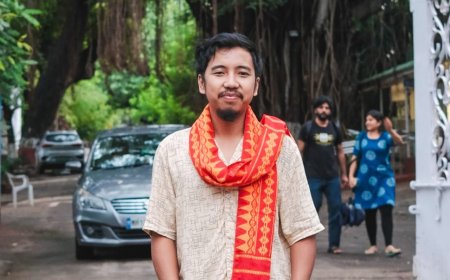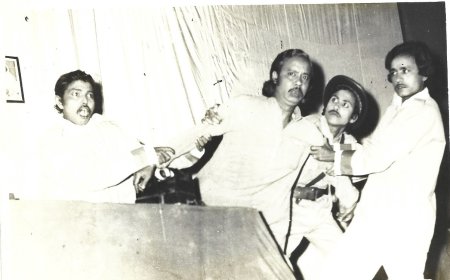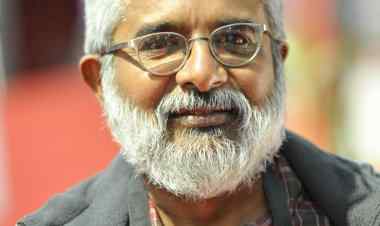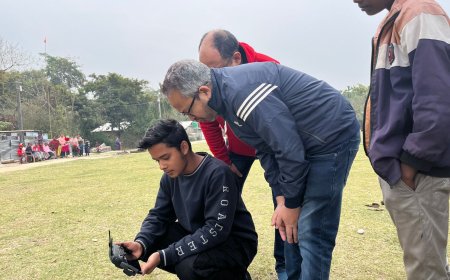An interview with 'Roti Koon Banasi?' filmmaker Chandan Singh
Dipankar Sarkar provides an interview with 'Roti Koon Banasi?' filmmaker Chandan Singh.
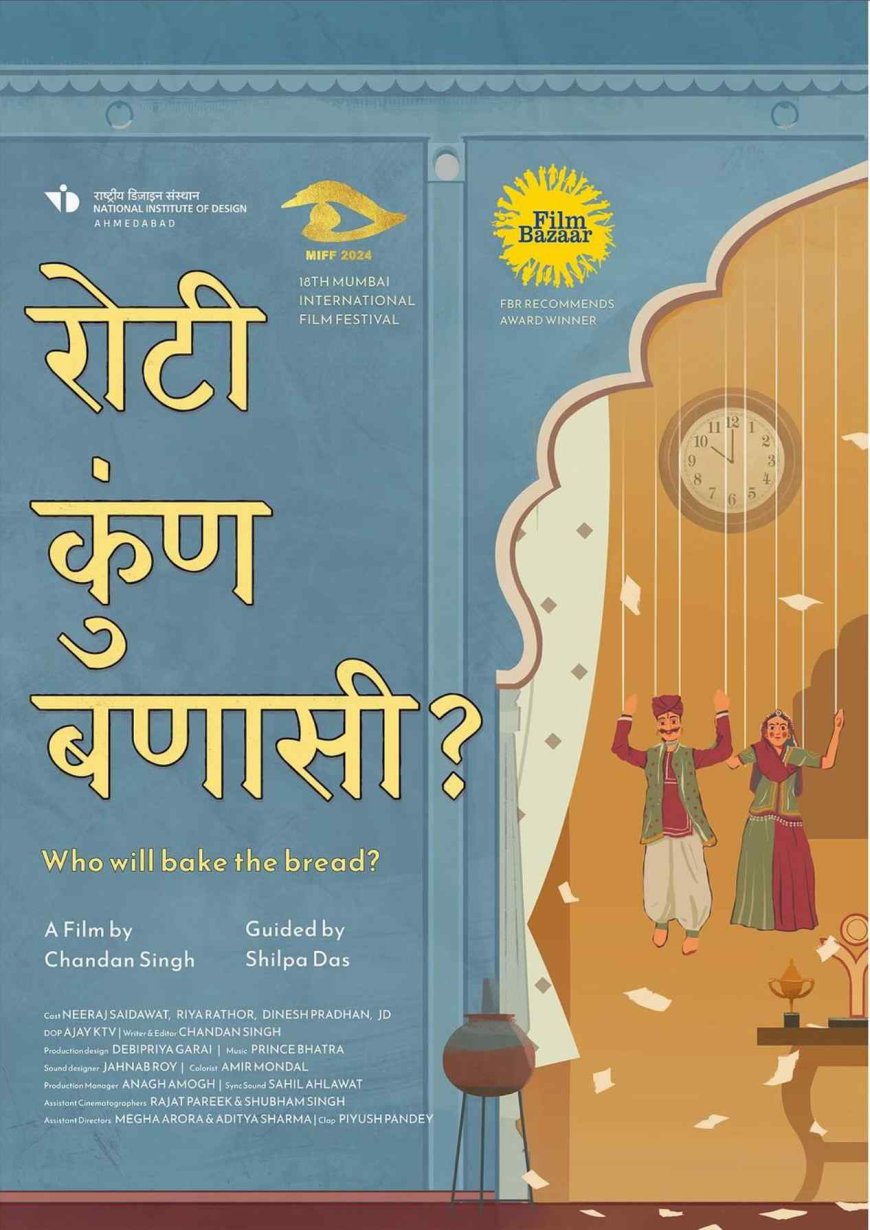
In the short film Roti Koon Banasi? (2022), the protagonist, Santosh (Neeraj Saidawat), is a jobless married man who resides with his father (Dinesh Pradhan), younger brother (JD), and wife, Roopa (Riya Rathod), in a small village in Rajasthan. The drama unfolds within the premise of a household where the authoritative father calls the short and a man who does not earn the bread is looked down upon. Under such parochial circumstances, when Roopa decides to appear for a job exam on the day of a family event, it challenges the family's deeply ingrained beliefs and values.
Roti Koon Banasi? was selected in the National Competition Section of MIFF 2024.
In this interview, the filmmaker Chandan Singh discusses his accidental choice to become a filmmaker, the development of the idea for the short film, and the bleak reality of growing up in a male-centric social system.
What motivated you to enrol in the National Institute of Design (NID), Ahmedabad?
Honestly, I did not plan to go to NID. I was doing my graduation at Birla Institute of Technology Jaipur in Multimedia and Animation. I was in my final semester when I heard a lot about NID and its reputation as a design institute. But I did not plan or prepare as per se. But I went and gave the test for the sake of it, and surprisingly, I did make it. I shared the news with a few of my friends, and most of them were like, You shouldn’t miss this chance and go out and explore. I’d say I just got lucky.
How did you develop the idea for your graduation film, Roti Koon Banasi?
I come from Rajasthan, which is very conservative and largely orthodox as a state. During my days at NID, I became aware of a lot of social and political issues that are imminent in our day-to-day lives, and so many of our decisions are shaped by those issues. One of the things that I wanted to explore was the presence of patriarchy and especially how it thrives among men. So the idea for Roti Koon Banasi started with my exploration of my upbringing as a man and my schooling at a boy's school. One common pattern that I was able to identify among a lot of men in general with whom I spoke during the initial phase of research. I found there is so much unawareness in men of their patriarchal behaviour. So I had a basic character in mind who I wanted to be not the ideal, masculine, and macho kind of guy. I wanted it to be a sensitive human being and then develop a story or an incident from his own experience, where the arc would be that he would try to fit into a gender norm.
As Santosh helps his father extract the old framed photographs, a dead lizard on the shelf startles him. What is the significance of this moment?
I wanted to present the idea of expressing fear in a father-son relationship through something very simple and mundane. Although I do feel I could have done this scene a bit better. Primarily, the scene was written to throw Santosh into an uncomfortable space and push him to survive it because he is aware of his father's presence beside him and also how his father would judge him based on his reaction to it. Is the entire drill of cleaning and decorating the house a pretence to hide the deeply ingrained patriarchy of the family? Yes, you’re spot on. When I was writing the script, I wanted to come up with an event that could allow me to explore the character of the father through the choices he makes to present himself. That was primarily the subtext for him because this whole facade of larger-than-life representation through photos and other prizes, expressing yourself in the most ideal way, while what you are doing inside the house is something very troubling in some sense. I have seen many elderly patriarchal men who do this. So yeah, there was this idea of emphasizing this pretence and hypocrisy that is very evident.
Santosh’s decision plays a key role in the film. What aspects did you consider when shaping the character?
I never wanted to tell the story of a perfect guy. I wanted to write about a character who is imperfect and who is going to fail. For me, it was important to explore the story of a man who is unable to do what he wants in a patriarchal setting because patriarchy denies the right to men as well. This was a crucial factor for me in writing Santosh. So I wanted a character who is confused because he isn’t aware of what his own identity is. His father considers him a failure, and his younger brother doesn’t respect him. Hence, he is constantly juggling from proving his worth to his father to supporting his wife and trying to find a way out where he can keep both of them happy.
You used music very sparingly in the film. How did you decide when to incorporate it?
As my film deals with multiple characters, I wanted to use music to establish the nature of relationships between the characters quickly. I had specific themes for the characters: one was for Santosh, another one for Roopa and Santosh, and lastly, one theme for Ranjeet. For Santosh's character, I wanted to incorporate a Rajasthani instrument called Khartal, and I wanted to play it in specific rhythmic patterns that amplified the tension or mimicked the pace of thoughts that Santosh felt every time he was in a dilemma. The idea was to make the audience connect more with the anxiousness of Santosh.
Why did you end the film with a black-and-white sequence?
So the end scene for me resembles the death of Roopa, in an allegorical way, of course. I wanted to use black-and-white to enhance the tragedy of the story. All the things that we saw before are of no use now—the colour of the house, the architecture. Nothing is important because now the character has lost her last chance. So, in a way, I wanted to present my take as a director on how I see Roopa now. The house that was decorated with frames has killed this character. The relationship between Roopa and Santosh is also dead in this scene, despite the event happening where relatives and guests have come. It’s completely lifeless.
How important was it for you to have your film selected for MIFF 2024?
A lot. I have been waiting for quite some time now for my world premiere. This film was my second fiction short, and before this one, I had my undergrad short ‘Albelo Jaipur’ in the 2020 National Prism section, which I couldn’t attend. So this was my first ever theatrical experience with my film. Luckily, I had my screening on Sunday evening, so it was houseful. It was special to present my work to the great festival audience at MIFF 2024.
What's Your Reaction?




































